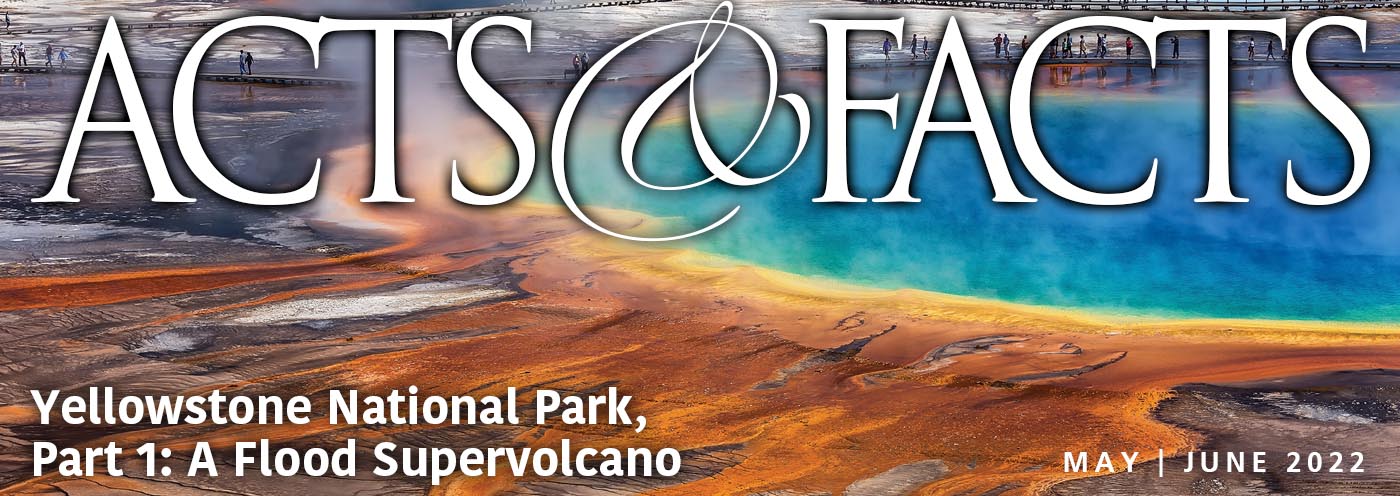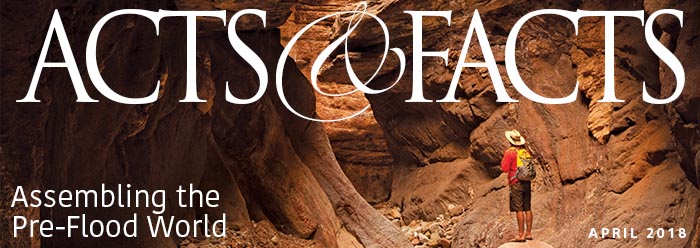Since the search for the Ark began in the 1940s,
evidence has continued to mount that the remains of a barge-like
structure still exist somewhere on Mt. Ararat in eastern Turkey.
This evidence consists primarily of reports by individuals
who claim to have seen the Ark. Unfortunately, none of these
accounts have been substantiated by documentation. Thus, all
are to some degree questionable, and each should be held lightly.
It can rightly be said that without these "eyewitness"
reports, there would be no reason to look for the Ark, for
the Bible contains no prophecy that it would be found. Indeed,
it would be unlikely to have survived, apart from providential
intervention.
These "eyewitnesses" all describe
the Ark in the same general fashion—a large rectangular barge,
usually with a catwalk, a "window," running its
entire length. They likewise describe it as being high on
the mountain, but not as high as the summit. They generally
claim that only a portion of it can be seen, usually at the
end of a long, hot summer, the rest covered by snow or rock.
Most claim it is in very steep terrain, perhaps on a ledge
adjacent to a cliff. For a variety of reasons, no one has
been able to pinpoint the location.
The Bible claims that "the Ark came to
rest on the mountains of Ararat" (Genesis 8:4). Ararat
was a region—a country—in the time of Moses, which included
the mountain today known as Mt. Ararat, and much other territory.
Thus the Bible does not specify a location in this region
other than implying a high elevation, for it took two-and-one-half
months for other mountains to appear (verse 5). The main reason
to look on greater Mt. Ararat is because the majority of the
eyewitnesses identify it as the site of their discovery, and
their stories, which are unrelated, substantially agree.
The Bible tells us something of the construction
of the Ark (Genesis 6:14-16) with three stories, a "window"
structure on top, and "pitch" within and without.
Noah was commanded to build it with "rooms" for
the animals.
The "gopher wood," from which the
Ark was made, is unidentified, and some have even speculated
that it may have been a synthetic material.
The gross dimensions are given in cubits: three
hundred cubits long by fifty cubits wide and thirty cubits
high. A cubit is usually thought to be the distance from a
man's elbow to his fingertips, but it seemed to vary from
one civilization to another. Estimates vary from 17.5 inches
to 24 inches. For convenience, most use a conservative figure
of 18 inches, making the Ark 450 feet by 75 feet by 45 feet.
Even at that, it was a huge vessel, certainly big enough to
carry two (or in some cases seven) of each "kind"
of land-dwelling, air-breathing animal. Beyond these few details,
nothing more is said of the Ark, other than that it was sufficient
for the journey.
My first trip to eastern Turkey was in 1971,
and I have returned twelve times since, the last being in
1989. Some expeditions have been more successful than others,
but each has been an adventure. The difficulties primarily
lie in gaining access to the mountain from the central government,
and in dealing with local officials. Once on the mountain,
we have been able to search a number of specific sites, and
have discovered many archaeological remains, but the Ark itself
has not been found. Several other expeditions have also joined
the search, with similar results.
Traditionally, the search was on foot, but in
recent years the Turkish government has allowed the use of
both helicopters and airplanes. Since ground expeditions usually
have been only minimally effective, there is, in my opinion,
no reason for further climbing expeditions, except perhaps
for sonar surveys on the ice cap itself, and also to check
out discoveries made from the air.
Political instability in the area limits access
to eastern Turkey. Most notably, the Kurdish minority has
been clamoring for independence, a movement which has gained
international attention due to the tragic plight of ethnic
Kurds in Iraq, not far to the south. The borders of Turkey,
Iran, and the former Soviet state, Armenia, all come together
at the base of Mt. Ararat, with predictable tensions. The
recent breakup of the Soviet Union has further destabilized
the area, as Armenia and Azerbaijan feud over borders.
Well-planned expeditions, with high-altitude
helicopters and sensitive scientific equipment, received permission
to search from both air and ground in 1990 and 1991, but each
was cancelled over the issue of Iraq and Kuwait, and then
the Kurdish problem ensued.
On a personal note, with my own responsibilities
at ICR increasing over the years, I have found it necessary
to cut back on my involvement in the search. My interest remains,
but I have no plans to launch another ICR-sponsored expedition.
However, I have maintained contact with the various expeditions
actively seeking permits, and there remains the possibility
that I would consider participating in a well-planned, high-tech,
aerial search. Other than that, I maintain sincere friendships
with other groups involved, but only nominally keep abreast
of activities.
Interestingly enough, there are a few individuals
who claim the Ark has already been found. They point to an
interesting boat-shaped formation discovered in 1959 in a
Turkish aerial mapping project. It is situated some seventeen
miles from the summit of Greater Ararat (i.e., with the "mountains
of Ararat"), is of a size compatible with the Biblical
dimensions (515 feet by 138 feet), and is in a streamlined
"boat shape."
The site has been investigated several times
over the years, first in 1960 by a joint Turkish-American
expedition, then by several groups in the '60s and '70s. My
first efforts to study it in 1975 were thwarted by the local
military, but two subsequent surveys were more fruitful. My
conclusion, and the conclusion of almost every other team,
was that it is an unusual geologic phenomenon, but not Noah's
Ark.
In the late 1970s, Mr. Ron Wyatt began studying
the area. While a nonscientist, Wyatt tirelessly surveyed
the area, eventually marshaling several lines of evidence
to support his contention that this formation is Noah's Ark.
Eventually, Wyatt joined forces with David Fasold, Dr. John
Baumgardner, Dr. Allen Roberts, and others.
Baumgardner, a geophysicist, was able to perform
several scientific tests on the site, such as magnetometry,
ground-penetrating radar, seismic, and finally, core drilling.
Although he was at first open to the possibility that the
site was the Ark, Baumgardner now contends he has disproved
the hypothesis, especially by the core-drilling, which revealed
only the sorts of rock on the nearby hillsides, and nothing
of archaeological significance.
Meanwhile, Wyatt and Fasold have both published
books on the "discovery" of the Ark, although they
have now parted company and disagree about many of the important
details.
Wyatt claims he has found much petrified wood,
of a type which had no tree rings. (He holds that pre-Flood
trees had no rings.) Fasold claims the Ark was constructed
of cemented reeds which have since decayed away. Wyatt talks
of the remains of three decks, rooms, and timbers, while Fasold
feels the impression of the decayed ship is about all that
remains. Both refer to "drogue stones," or stones
suspended by rope from a boat and used to maintain stability
and navigation. Both refer to corroded metal fittings, which
they claim are found in rows, delineating the "ribs of
the ship," as indicated by metal detectors and especially
a "molecular frequency generator." This device,
which includes two hand-held brass rods that cross when the
sub-surface target is located, has been used by both to generate
significant aspects of their data. Let me comment briefly
on each of these points:
- On my two field studies and the investigations by many
others, and in the microscopic study of samples gathered
at the site, no petrified wood has been found.
The rock types are somewhat exotic, but I have found neither
wood nor cemented reeds. (By the way, petrified woods
from before the Flood do have tree rings. Evidently,
while the seasons may not have been as pronounced, they
were sufficient to produce rings in the woody trees, as
is obvious by studying petrified wood from numerous geologic
layers.) - The reliable subsurface tests do show distinct buried
layers, but core drilling identified these layers as rock
surfaces natural to the area. - The drogue stones are found at some distance from the
site, the nearest one, to my knowledge, being fourteen
miles away. They are not dissimilar to many tombstones
in the area, and are currently found in graveyards. - The metal "fittings" are a serious overstatement.
Much metallic ore is present in the surrounding hillsides
and on the site. Furthermore, igneous cobbles are frequently
present, which contain high concentrations of naturally
occurring magnetic minerals. A metal detector will indicate
this high concentration, which could be mistaken for a
metal object. The sporadic cobbles were not found in a
straight line, according to those present at the time,
but ribbons connecting the locations of these cobbles
did obviously appear in a line. Subsequent metal-detector
surveys by several independent parties, including Baumgardner,
have not discerned any pattern.
-
The molecular frequency generator, with
its crossing, hand-held, brass rods, appears to employ
the ancient art of divination—a practice thoroughly condemned
by Scripture. At best, the results are hardly considered
trustworthy. But it is this device which has produced
the main support for the claim of metal fittings.
Both Fasold and Wyatt are articulate and assertive
in their manner, and many have been convinced. They have
aggressively promoted themselves and their works, and in
so doing, have intimidated many and frustrated serious scientists
and Ark searchers. Both have shown a tendency to attack,
personally, those who disagree with them. In their writings
and interviews, each has demonstrated disdain for Christians,
in general, and ICR, in particular.
The site itself has received some attention
with Turkey, and there is an effort to promote it as the
Ark, in hopes of receiving tourist dollars. An unfurnished
"visitor's center" has been built overlooking
the site. Unfortunately, getting to the site is difficult.
A narrow, rutted, dirt road winds up a steep hillside to
a nearby village, but it is not navigable by many cars.
Claims of a six-lane highway leading to the site are false.
My own geologic survey, coupled with microscopic
analysis of all the rocks gathered and the thoughts of Baumbardner
and others, has led to the conclusion that the formation,
which rests between two hills on the side of a larger hillside,
was formed as soil and mud slid downhill around a stable
area, leaving a streamlined shape. Suffice it to say that
there is a perfectly straightforward geologic explanation
for the formation, and absolutely no indication that it
is of archaeological significance.
Efforts to launch meaningful expeditions in
the summer of 1992 were minimized by ongoing tensions in
the area. But while the search has changed over the years
and been tainted with much controversy, there is no shortage
of veterans who want to return, and new groups attempting
to launch their own efforts. We trust any future expedition
will be conducted with integrity, all the while bathed in
prayer, for until God intervenes, the Ark's whereabouts
will remain a mystery.
*Dr. John D. Morris is President
of ICR.






